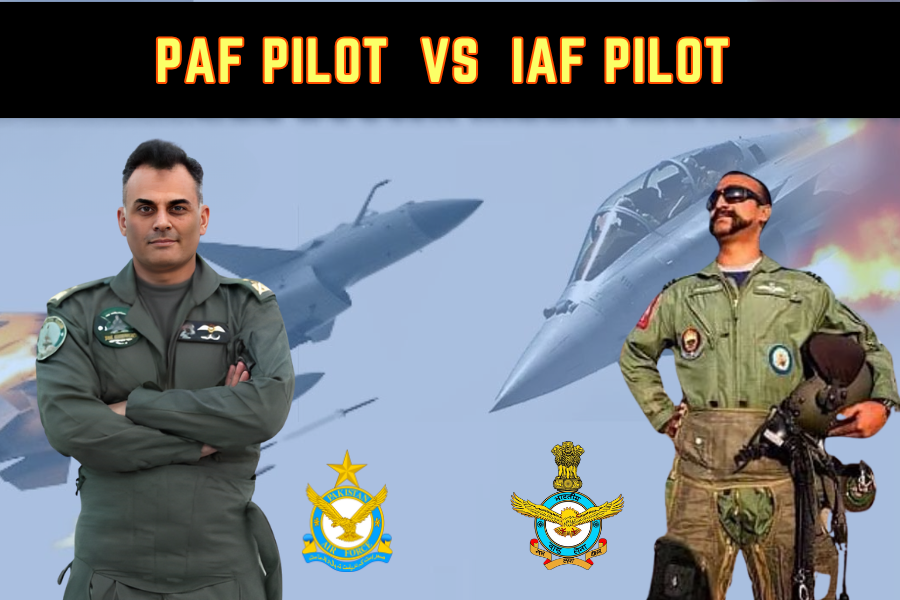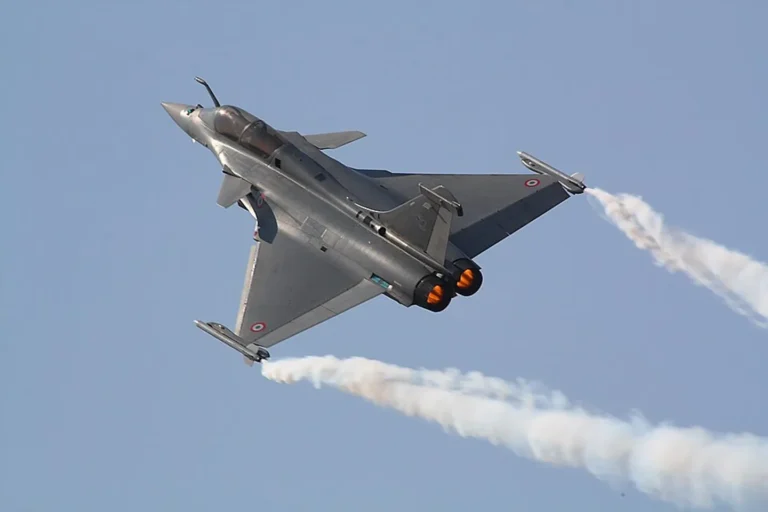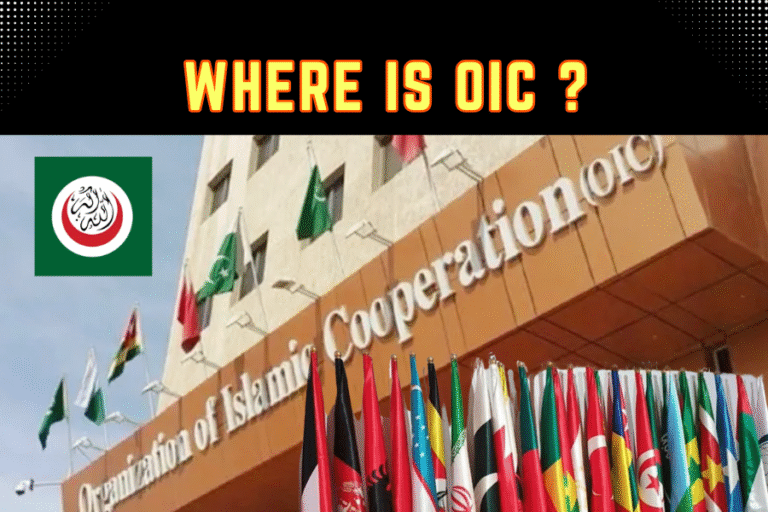(By Khalid Masood)
The May 6–7, 2025, Indo-Pak military skirmish, known as Operation Sindoor, exposed critical deficiencies in the quality of Indian Air Force (IAF) pilots compared to their Pakistan Air Force (PAF) counterparts, as evidenced by the rapid downing of three Rafale jets, one Su-30 MKI, and one MiG-29 within minutes of hostilities. The IAF’s subsequent grounding and withdrawal of aircraft from border areas, as reported by Defense News highlight a significant operational failure. This article examines the reasons behind the IAF’s poor pilot quality, compares the recruitment and training of raw recruits in both air forces, explores why the IAF attracts inferior manpower, and critiques its flawed training approach, which led to deploying underprepared pilots in high-tech aircraft like the Rafale. The analysis draws on the Pakistan-China Institute (PCI) report, 16 Hours that Reshaped South Asia, prior responses, and open-source data, maintaining a critical lens to avoid uncritical acceptance of narratives.
1. PAF’s Historical Excellence: 1965, 1971, and Beyond
The PAF’s supremacy in Operation Sindoor is not an isolated achievement but a continuation of its storied legacy, rooted in the 1965 and 1971 Indo-Pak wars and its extraordinary contributions in the Middle East. These historical feats, a “feather in their cap,” underscore the PAF’s enduring edge over the IAF and its global distinction.
- 1965 Indo-Pak War: In the September 1965 conflict, PAF pilots, flying U.S.-supplied F-86 Sabres and F-104 Starfighters, outmaneuvered a numerically superior IAF, which fielded British Hunters and Soviet MiG-21s. The PAF achieved a 3:1 kill ratio, downing 25 IAF aircraft for eight losses, per The Express Tribune (2015). Squadron Leader M.M. Alam’s record of shooting down five IAF Hunters in one minute over Sargodha remains a global benchmark, as noted by Dawn (2020). PAF’s aggressive tactics and superior training neutralized India’s 2:1 aircraft advantage, forcing the IAF to avoid daytime operations by war’s end.
- 1971 Indo-Pak War: Despite Pakistan’s overall defeat and the loss of East Pakistan, the PAF outperformed the IAF in the western theater. Flying Sabres and Chinese-supplied MiG-19s (J-6s), PAF pilots downed 45 IAF aircraft for 20 losses, achieving a 2.25:1 kill ratio, per Jane’s Defence Weekly (1999). The PAF’s defence of Karachi and strikes on IAF bases in Amritsar showcased tactical brilliance, contrasting with the IAF’s reliance on Soviet MiG-21s and Su-7s, which suffered from poor coordination, as reported by The Hindu (1972).
- Operation Swift Retort. On February 27, 2019, in response to India’s Balakot airstrike, the PAF launched a swift counteroffensive over Kashmir, shooting down two IAF fighter jets—a MiG-21 Bison and an Su-30 MKI—within minutes, per Dawn (2019). Wing Commander Abhinandan Varthaman, piloting the MiG-21, was captured by the Pakistan Army after ejecting, becoming a symbol of PAF’s tactical superiority.
- Downing Israeli Jets: PAF pilots hold the unique distinction of being the only air force to shoot down Israeli fighter jets in combat, achieving this feat while flying for Jordan and Syria in the 1967 Six-Day War and 1973 Yom Kippur War. In 1967, PAF pilots, seconded to the Jordanian Air Force, downed two Israeli Mirage IIIs using Hawker Hunters, as documented by Aviation Week (1968). In 1973, flying Syrian MiG-21s, PAF pilots shot down three Israeli F-4 Phantoms, per Middle East Eye (2013). These victories, against one of the world’s most formidable air forces, cemented PAF’s global reputation, adding a prestigious feather to their cap.
These historical triumphs highlight PAF pilots’ exceptional skill, courage, and adaptability, setting the stage for their decisive performance in Sindoor, where they “played hell” with the IAF.
2. IAF Pilot Deficiencies: What Happened in Operation Sindoor?
The PCI report, launched on May 24, 2025, and available at www.pakistan-china.com, details Pakistan’s decisive victory in the 16-hour conflict, attributing it to the PAF’s “professionalism, skills, and passion.” Within minutes of India’s retaliatory strikes on alleged terror sites in Pakistan and Azad Kashmir, following the April 22, 2025, Pahalgam attack, PAF pilots downed three Rafales, one Su-30 MKI, and one MiG-29, as claimed by Pakistani sources and partially confirmed by CNN (May 7, 2025). The IAF’s grounding of its fleet and relocation of aircraft to rear bases, per India Today (May 8, 2025), reflect a strategic retreat to avoid further losses. Key deficiencies in IAF pilot performance include:
- Poor Situational Awareness: Experts and Veterans criticized IAF pilots for failing to counter PAF’s J-10C jets, equipped with PL-15E missiles, which outmaneuvered Rafale’s SPECTRA electronic warfare suite. The rapid losses suggest inadequate real-time threat assessment.
- Ineffective Use of High-Tech Systems: Rafale’s AESA radar and Meteor missiles, designed for beyond-visual-range (BVR) combat, were underutilized, as analyzed by Jane’s Defence Weekly. This points to insufficient training on complex platforms.
- Lack of Aggressiveness: PAF pilots, leveraging Chinese-supplied EW, established “cyber supremacy” (PCI report), while IAF pilots appeared reactive, unable to exploit their numerical advantage (1,250 aircraft vs. PAF’s 550).
These shortcomings contrast sharply with the PAF’s coordinated, aggressive tactics, raising questions about the IAF’s recruitment, training, and operational preparedness.
3. Why Does the IAF Have Poor Quality Pilots?
The IAF’s pilot quality issues stem from systemic problems in recruitment, training, and operational culture, compounded by broader socio-economic and institutional factors. Below, we analyze these deficiencies, comparing them to the PAF’s approach.
Recruitment: Type of Raw Young Men
Both air forces recruit young men (and increasingly women) aged 17–22, primarily through competitive exams and physical assessments, but the quality and motivations of recruits differ:
- IAF Recruitment:
- Process: The IAF recruits through the National Defence Academy (NDA), Combined Defence Services (CDS) exams, and Air Force Common Admission Test (AFCAT), targeting graduates with science backgrounds. Annual intake is ~200–300 pilots, per The Hindu (2024).
- Raw Material: Recruits are drawn from India’s diverse, urban-heavy population, with many from middle-class backgrounds seeking stable government jobs. However, the allure of private-sector opportunities in tech (e.g., Infosys, TCS) diverts top talent, as noted by Business Standard (2023). Elite institutions like IITs produce engineers who prefer Silicon Valley over military service, leaving the IAF with less competitive candidates.
- Motivations: Many recruits are driven by job security and prestige rather than martial passion, leading to a “careerist” mindset. Experts and Veterans believe that urban recruits lack the resilience of rural or tribal candidates, who are underrepresented due to educational barriers.
- Challenges: India’s 1.4 billion population offers a vast pool, but socio-economic disparities limit access to quality education, reducing the number of STEM-proficient candidates. Corruption in recruitment, such as 2021 AFCAT exam leaks, further erodes meritocracy.
- PAF Recruitment:
- Process: The PAF recruits through the Inter-Services Selection Board (ISSB) and PAF-specific tests, targeting matriculates and graduates for its ~100–150 annual pilot intake, per Dawn (2024). The General Duties (Pilot) branch emphasizes physical fitness and mental agility.
- Raw Material: Recruits come from a smaller, more cohesive 240 million population, with a strong martial tradition in Punjab and Khyber Pakhtunkhwa. Rural and tribal candidates, valued for grit, are actively recruited, as seen in PAF’s outreach in FATA. The PCI report praises PAF pilots’ “passion,” reflecting cultural emphasis on military honor.
- Motivations: PAF recruits are motivated by patriotism and religious zeal, reinforced by narratives of defending against India. Limited private-sector opportunities in Pakistan channel top talent into the military, unlike India’s competitive tech industry.
- Advantages: Pakistan’s centralized education system, despite flaws, ensures a steady STEM pipeline, with PAF College Sargodha, Military Collage Jhelum, Cadet colleges like Hasan Abdal, Pitaro, Dera Bugti and Parachinar producing disciplined candidates. The PAF’s merit-based selection, less tainted by corruption, attracts high-caliber recruits.
4. Why IAF Gets Inferior Manpower
The IAF struggles to attract India’s best talent due to:
- Competition from Private Sector: High-paying tech jobs (average IIT graduate salary: $100,000/year) outshine military pay ($15,000–20,000/year for IAF officers), per Economic Times (2024).
- Urban Bias: Recruitment favors urban, English-educated candidates, alienating rural talent with stronger physical aptitude but weaker academics.
- Cultural Shifts: India’s youth, increasingly apolitical, view military service as risky compared to stable civilian careers, unlike Pakistan’s martial culture, where PAF service is a badge of honor.
- Diversity Challenges: India’s linguistic and cultural diversity complicates cohesion, unlike Pakistan’s more homogeneous recruit pool, which fosters unity, as noted in Firstpost (2023).
5. Training: IAF’s Failures vs. PAF’s Excellence
The IAF’s training pipeline, designed to produce world-class pilots, is plagued by structural and resource constraints, while the PAF’s focused approach yields superior results.
- IAF Training:
- Structure: Pilot training occurs at the Air Force Academy (Hyderabad), with 18–24 months of basic, advanced, and operational conversion phases. Recruits fly HAL Kiran trainers, then Hawks, before transitioning to fighters like Rafale or Su-30 MKI.
- Deficiencies:
- Pilot Shortage: The IAF has 3,800 pilots against a sanctioned 4,200, a 10% deficit (The Hindu, 2024). This forces rushed training, with pilots logging only 150–180 flight hours annually, below NATO’s 200-hour standard.
- Outdated Facilities: Training bases rely on aging simulators, with Rafale-specific systems delayed until 2023, per Reuters. High-tech platforms require 300–400 hours of familiarization, which overstretched instructors cannot provide.
- Multi-Platform Complexity: Pilots must master French (Rafale), Russian (Su-30), and Indian (Tejas) systems, creating cognitive overload. The Rafale’s AESA radar and Meteor missile demand specialized BVR training, which only 20% of pilots receive, per Business Standard (2024).
- Corruption and Bureaucracy: Mismanagement, including 2022 Hawk trainer maintenance scandals, limits aircraft availability, reducing training time. Bureaucratic delays in simulator upgrades exacerbate gaps.
- Outcome: Half-trained pilots, as seen in Sindoor, lacked the skills to exploit Rafale’s capabilities, relying on the aircraft’s automation to “fight on its own,” a flawed assumption exposed by PAF’s J-10C tactics.
- PAF Training:
- Structure: Training at Risalpur Air Base spans 24 months, using K-8 Karakorum and T-37 trainers, followed by JF-17 conversion. Annual flight hours average 200–220, per Dawn (2024).
- Strengths:
- Focused Curriculum: PAF pilots train on Chinese platforms (JF-17, J-10C), ensuring compatibility and deep specialization. Annual Shaheen exercises with China’s PLAAF hone BVR and EW skills, as noted in the PCI report.
- Advanced Simulators: Chinese-supplied J-10C simulators, installed by 2023, replicate real-world scenarios, enabling pilots to counter Rafale-like threats. The PAF’s EW training, conducted in Xinjiang, was critical in Sindoor’s drone interceptions.
- Meritocratic Culture: The PAF’s rigorous selection and continuous evaluation, per The Express Tribune (2024), ensure only top performers fly fighters, unlike the IAF’s rushed promotions to fill shortages.
- High Morale: The PCI report emphasizes PAF pilots’ “passion,” fueled by national unity post-Pahalgam, contrasting with IAF’s low morale amid political polarization (Times of India, May 2025).
- Outcome: PAF pilots, with superior training and cohesion, executed precise, aggressive maneuvers, downing IAF jets and drones within minutes, as claimed by Pakistani sources.
6. Why IAF Training Fails: The IAF’s training failures stem from:
- Resource Constraints: Budget allocation prioritizes procurement ($15 billion for Rafales) over training ($2 billion annually), per Economic Times (2024). Simulator and trainer shortages force reliance on outdated methods.
- Overreliance on Technology: The IAF assumes high-tech aircraft like Rafale can compensate for pilot inexperience, a fallacy exposed by Sindoor. The Rafale’s automation requires skilled operators, which half-trained pilots cannot provide.
- Lack of Combat Exposure: Unlike PAF pilots, who gain experience in Balochistan and Khyber Pakhtunkhwa operations, IAF pilots rely on exercises like Garuda, which lack real-world intensity.
- Instructor Shortages: Experienced IAF pilots are diverted to operational roles, leaving rookies to train rookies, as noted by Firstpost (2024).
7. Deployment of Half-Trained Pilots
The IAF’s decision to deploy underprepared pilots in Sindoor reflects a desperate bid to project strength after the Pahalgam attack, hoping high-tech aircraft would compensate for human shortcomings. This strategybackfired due to:
- Political Pressure: Modi’s government, facing domestic outrage over Pahalgam, pushed for swift retaliation, bypassing readiness assessments, per Middle East Eye (May 2025).
- Overconfidence in Technology: The IAF believed Rafale’s advanced systems would overwhelm PAF’s J-10Cs, ignoring the need for pilot proficiency, as analyzed by Jane’s Defence Weekly.
- Operational Misjudgment: Deploying mixed fleets (Rafale, Su-30, MiG-29) without integrated tactics led to chaos, with pilots unable to counter PAF’s EW, resulting in rapid losses and the grounding order.
8. Why Did the PAF Outperform the IAF?
The PAF’s superiority in Sindoor is a product of its recruitment, training, and operational culture, which contrast sharply with the IAF’s systemic failures:
- Cohesive Recruitment: The PAF’s focus on martial regions and meritocratic selection ensures a motivated, disciplined recruit pool, unlike the IAF’s urban-biased, careerist candidates.
- Streamlined Training: Training on Chinese platforms, supported by advanced simulators and joint exercises, produces pilots adept at BVR and EW, as demonstrated by J-10C’s dominance. The IAF’s multi-platform complexity overwhelms its pilots.
- Operational Readiness: The PAF’s real-world experience and inter-service coordination, praised in the PCI report, enabled rapid, effective responses, while the IAF’s bureaucratic silos and low morale hindered performance.
- Strategic Clarity: Under Air Chief Marshal Zaheer Ahmad Babar Sidhu, the PAF executed a unified strategy, leveraging EW and cyber supremacy, whereas the IAF’s rushed, politically driven strikes lacked coherence.
9. Addressing Counterarguments
Critics may argue that the IAF’s losses were due to PAF’s technological edge, not pilot quality. However, the PCI report and Defense News confirm that J-10C’s success relied on pilot skill, not just PL-15E missiles. India’s Rafale, with superior radar and missiles, should have prevailed if pilots were adequately trained. Others may claim India’s grounding was a tactical retreat, not a defeat, but the relocation of aircraft, per India Today, indicates a collapse of offensive capability. Pakistan’s economic constraints could limit its edge, yet CPEC’s $65 billion investment ensures sustained military modernization, unlike India’s scandal-plagued procurement.
10 . Conclusion
The May 2025 Indo-Pak skirmish exposed the IAF’s poor pilot quality, rooted in inferior recruitment, inadequate training, and the flawed deployment of half-trained pilots in high-tech aircraft like Rafale. The PAF’s rapid downing of three Rafales, one Su-30 MKI, and one MiG-29, as detailed in the PCI’s 16 Hours that Reshaped South Asia (available at www.pakistan-china.com), reflects its superior human resource capacity, cohesive training, and strategic clarity. The IAF’s reliance on technology to compensate for pilot deficiencies, driven by political pressure and systemic failures, led to its defeat. Pakistan’s triumph, powered by Chinese-supplied J-10Cs and disciplined pilots, underscores the primacy of human skill over hardware, cementing its strategic ascendancy in South Asia.
Sources: Pakistan-China Institute Report, May 24, 2025; Defense News; CNN; India Today; Jane’s Defence Weekly; The Hindu; Business Standard; Economic Times; Firstpost; Dawn; The Express Tribune; Middle East Eye; Times of India; Reuters.







